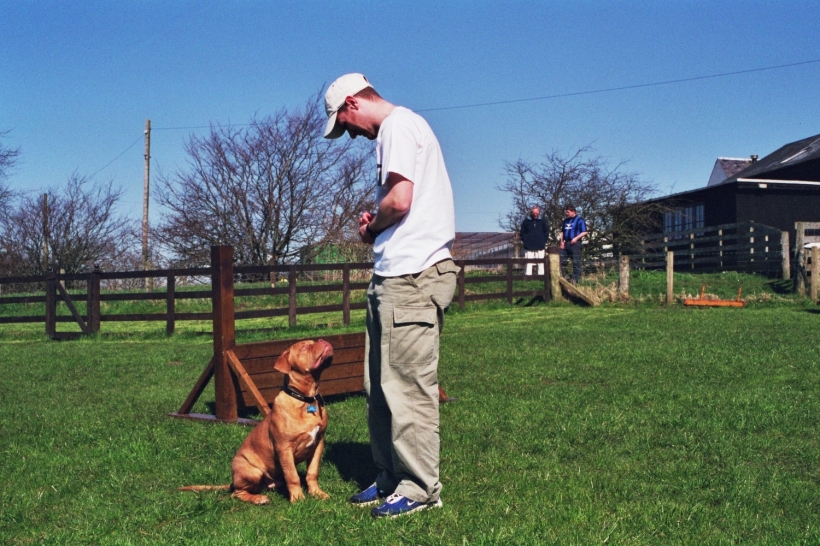
One of the activities we do both inside and out is searching. When we are outside, as I’ve mentioned before, he’s a different dog, all about the work. I am fortunate to have two areas of grass near to me which is allowed to overgrow and I use the long grass to hide the toys. As with most of the activities we do, we are working on sets of skills which can then be transferred to other activities. When we are doing search work, we are working on discrimination of cues, reinforcement, delayed reinforcement and that we can play calmer games with toys, it’s not all about chasing and killing them.
It’s been 10 days or so since we did any search work and we also changed location to a new place which he’s never worked before. I was loose with how I expected him to perform. I put 6 extra large classic Kongs into the grass by throwing them. I can guage his perfomance over time to see how much he is improving by the following
- Do I need to use the lead to hold him when I throw the Kongs? And if so how tightly do I need to hold the lead, is it just a light touch or not at all? Will he do this off lead?
- How many verbal cues of “wait” do I need to give him. One for each Kong toss or can I get more than one Kong our per verbal cue?
- I wait for him to give me eye contact before I release him to search. How quickly does he give me eye contact (he’s toy driven so it’s hard for him to look away from where toys are)? How long can he give me eye contact? I’ll shape this to the duration I want. Can he do another cued behaviour before release?
- How much verbal cuing does he need to commence each search? Will a “find it” be enough or does he need physical prompts such as hand signals or me moving into the search area with him each time and then moving back to my marker? The more prompts and cues he needs the less he understands which gives me information about how he is feeling.
- How much barking am I getting? He barks for the Kong so I take barking as a sign he doesn’t understand what he is being asked.
- Will he search and retrieve one or will he find one and then go looking for another before he brings the first one back to me? I use the biggest Kongs deliberately so he can only retrieve one at a time?
- How many Kongs will he find and retrieve before he needs a game? The reinforcement we use, other than the success of finding the toy is that I toss the kong for him to catch. How many kong tosses does he need per retreive? Can he search and retrieve more than one before the game to catch?
Another point to note is that the game becomes harder as the set round goes one. At the start, he has 6 toys to find, then 5 then 4 etc. This is all within the same area each time.
We play three rounds of this game which equates to 18 retrieves. I can measure his progress, understanding or mood by looking at all these variables. Ultimately, I am aiming for one verbal cue to “wait” per set of 6, one verbal cue to commence searching and retrieving, one one big game at the end of the three sets as the big reinforcer for the whole game. We are a ways away but we have made massive inroads so far as he wouldn’t even give the up when I first brought him home.
I don’t expect improvements each time but if I am careful with what I am doing we will improve over time.
Baby steps. Have a great weekend.
John and Logan “Relentless” McGuigan








